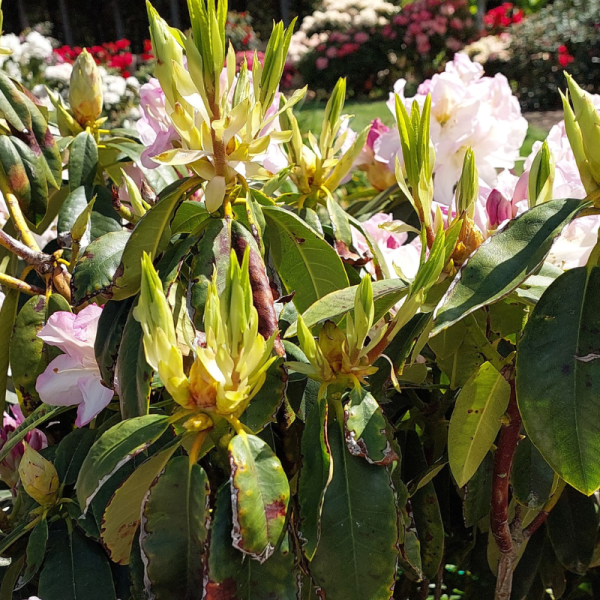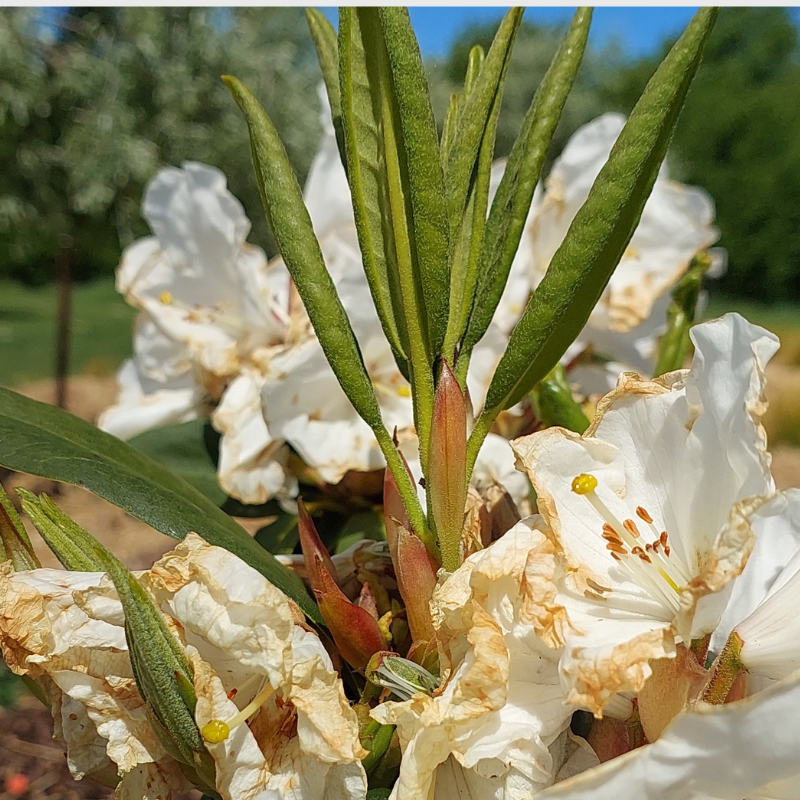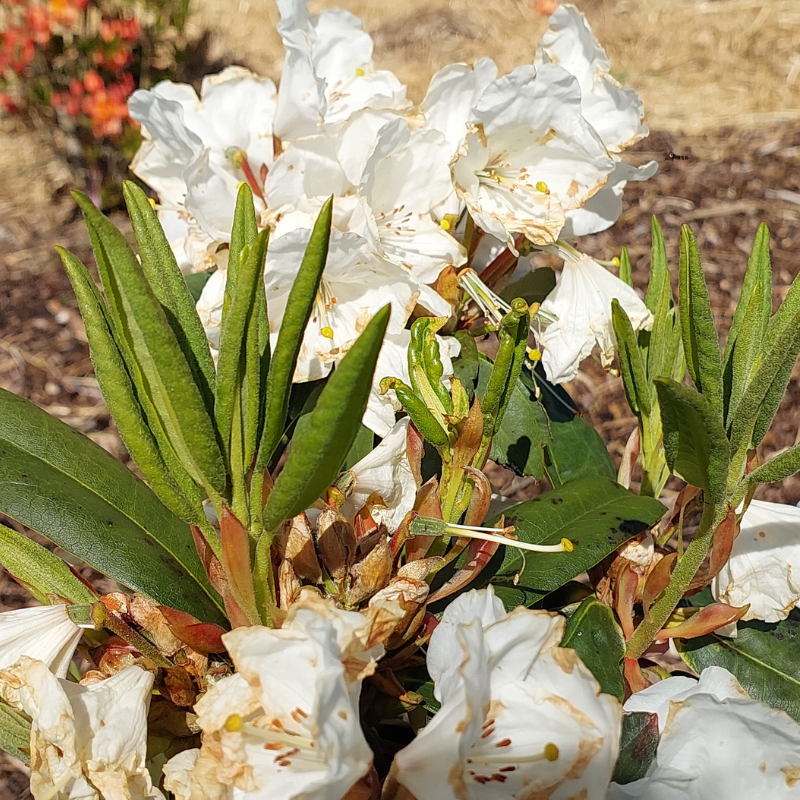Hot Winds, Cooked Flowers, and Resilient Rhododendrons
What a windy start to our flowering season! Initially, our display garden was at least two weeks later than normal, but then one hot, windy Saturday arrived and everything seemed to change at once. The warm blast encouraged the flower buds to open — and at the same time, those beautiful blooms got cooked! Since then, the rhododendrons have been flowering continuously, with different plants bursting into colour each day, so there’s still plenty of beauty to enjoy.
The challenge this spring has been the extreme temperature swings — one day it’s 26°C and the next it’s down to 10°C. It’s been playing havoc with Mother Nature! The plants are just as confused as we are, not quite sure whether they should be growing, flowering, or resting.
And of course, the famous Canterbury nor’wester has come back with a vengeance. The dry winds have quickly sucked the moisture out of the soil, leaving cracks in the ground even after the wet winter we’ve had. That combination of heat, wind, and dryness is the perfect recipe for wind burn on new growth — something many gardeners are noticing at the moment.
What Wind Burn Looks Like

Close-up of burnt leaves from the wind on the edges, New Leaf buds emerging from the cooked flower buds.
- Wind burn (or wind scorch) happens when the wind strips moisture from the leaves faster than the roots can replace it. You’ll notice:
- Browning or crisping along the edges and tips of the new leaves
- Tender shoots shriveling or curling
- Dull, grey, or bronzed patches on young foliage
- In severe cases, new leaf buds may dry out completely
It’s heartbreaking to see soft new growth cooked before it’s had a chance to toughen up.
How I’m Managing It in the Garden
I like to try to stay on top of things as best I can, so I initially started deadheading all the cooked flowers just to aesthetically keep the garden looking tidy. But then the jolly hot winds came in with a vengeance, cooking my lovely new leaf shoots. The trick has been figuring out how to protect those fresh new shoots from the hot nor’wester that’s literally cooking them.
Normally, I’d continue deadheading through the season, but because the winds have been so intense, I’ve decided to pause for now. The spent flower trusses are providing a bit of shelter for the tender new leaf buds underneath, acting as a natural windbreak. Once the new shoots have toughened up a bit, I’ll go back and finish the deadheading.
To help support these new shoots, I’ve been watering in the morning, giving the plants a good soak before the heat of the day sets in. Keeping the soil moist means the rhododendrons are better hydrated and can cope far better with these extreme weather swings.
If you do find that some of the single new shoots get cooked, don’t panic! It’s just like natural deadheading — you’ll often get three new shoots forming where there was only one, which actually makes for a bushier plant in the long run.
It’s really a case of working with Mother Nature this season — being flexible and patient as we adjust to what she throws our way.
If your rhododendrons are showing signs of wind burn or leaf scorch, don’t worry too much. With consistent watering, a bit of shelter, and time, they’ll bounce back beautifully. Keep an eye on your soil moisture, protect soft new growth where possible, and remember — every challenge in the garden is an opportunity to learn and adapt.
- Mount Everest flowers protecting the new leaf buds coming through.
- Multiple leaf buds have opened within the protective canopy of the flowering Mount everest Rhododendron
- Greers Cream Delight flower bud has been removed allowing the strengthened leaf buds to mature.



